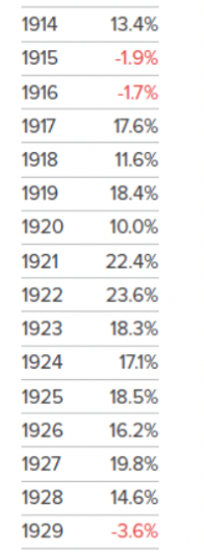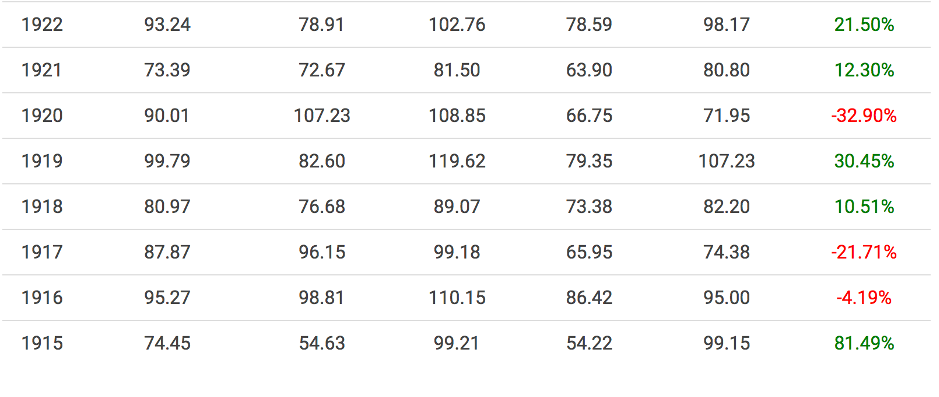

This week I was given a lesson on why you need to be scared to your bones about the future of the global economy and therefore the stock market, which has been throwing off the fear factor that took collective share prices from all-time highs into deep bear market territory.
The home-made futurist categorically said nothing gets back to normal without a vaccine and a vaccine is at least a year or more away! The interesting aspect of the person who lectured me was that he was neither a medical expert nor an economic or market expert. He was, what I’m encountering a lot, a “Coronavirus expert”!
To his credit he got worried about the virus way before the experts who have recently lost their US funding — the World Health Organisation (WHO) — and he went long gold and an exchange traded fund or ETF that makes money when the stock market falls, with the great ticker code of BEAR!
So he is a good gut-feeling investor, who maybe should be a fund manager in a high-growth, high-risk fund. As a financial adviser, I can’t do that unless my client begs me to take risks and even then I’d have to put in writing that I don’t want to do it but that I’ve been directed to do so.
Personally, for my own investments, I can take a punt but it’s never for any more than 10% of my portfolio. I’m a long-term investor who buys when everyone is scared and I buy quality companies that will do well over time.
That’s me but let’s get back to my expert.
This guy spooked me so much that I contacted a real medical expert — cardiologist and media medico, Dr. Ross Walker — to see if we could get back to a staged trek towards normalcy, even if we don’t have a vaccine.
Now Ross has patients and immunity is a big issue but even accepting that, he says we could return to work without a vaccine. Treatments, social distancing and other practices would permit progressive steps toward a more normal life.
We learnt on Friday that these steps could start in four weeks’ time locally, which would put us behind places like Denmark, Austria and Germany, who have or will soon be allowing small shops to open.
Given how good we’ve been with infections and death rates on a global basis, waiting four weeks looks like over-the-top caution that could really pay off for us in the long run. Research work done by the US central bank — The Fed — found with the Spanish flu of 1918, the cities in the US that were the toughest on non-pharmaceutical interventions or NPIs, roared back faster and stronger than those who took risks and went back too early.
Morgan’s chief economist, Michael Knox, believes after all these social restrictions and with all the promised spending in the pipeline, we’re set to rerun the 20th century Roaring 20s in the 21st Century. And there’s a bit of that optimism built into the stock market comeback we’ve seen so far. This chart shows how the Dow Jones Industrial Average has gone down and up since WHO got worried about the globality of Covid-19.
On February 14 I wrote a piece with the headline: “Could the Coronavirus cause a mega-market meltdown?” And while I raised a number of doubts, it was the comfort factor of WHO that stopped me becoming an alarmist.
This is what I wrote: “What worries me is that Wall Street seems to be too calm about the potential effects of the virus and this may be giving our stock market false hope. And as I’ve suggested, there is good reason to be unsettled and nervous about the information we keep getting on the severity of the virus.
Yesterday we were told there was big spike in deaths but the World Health Organisation only a few hours ago said there was “No change in outbreak despite the China spike.” (BBC.com)
So right now, we’re hoping that our NPIs and the current success in fighting the virus will permit an eventual pathway to a more normal economy and the huge stimulus, which is over $US7 trillion! This is about 8% of global GDP and if we get back sooner than was expected when these spending promises were made, then the stock market is on the money in rebounding. If we are locked up longer than expected, then my expert will be right.
On Friday we learnt hedge fund billionaire Paul Singer of Elliott Management tipped another big leg down. "Our gut tells us that a 50 per cent or deeper decline from the February top might be the ultimate path of global stock markets,” said the Elliott newsletter.
These guys have $US40.4 billion in assets under management and they are real experts but being hedge fund people, you have to be careful.
In 2016, Singer’s hotshot team as a shareholder piled the pressure on to BHP in the media, bagging the company’s management and performance. This was just as the company was actually on the improve, as this chart shows.
BHP:NYSE (2013-2020)

BHP’s New York Stock Exchange price was around $US27 and it was heading towards a high of $US58.30, so the Elliott team either wrongly underestimated the quality of BHP’s management or they knew it was the right time to get hostile in the media.
It’s like old press releases from George Soros, where you’re not sure if he’s really giving you objective or subjective info that could coincidentally help his investments.
It looks like my untrained expert and real expert, Paul Singer, agree but there’s some historical data that surprised me. While Dr Walker convinced me we can get economies going even without a vaccine, I was curious how the Australian stock market did during the years around the Spanish flu.
All Ords Annual Returns (1914-1929)

What shocked me was that the local stock market, as measured by the All Ords, didn’t fall over the Spanish Flu time period and actually roared over the Roaring 20s!
That was Australia but what about the USA? There the story was different, as the table below shows.
Dow Jones Industrial Average (1915-1922)

The Spanish Flu is dated January 1918 to December 1920 and for 1918 and 1919, the Dow coped with it. Obviously, the 32.9% fall in 1920 was related but the pain and fear didn’t last long. And this was when the standard of medical research and hospital care was shocking compared to now.
I can see how another big leg down for stocks could happen, say if US virus stats don’t improve as expected and the Yanks go back to work too soon. But let me assure you I’d be a buyer on any further big sell offs.
And I’m sure Paul Singer and his Elliott team will be buying too, despite the likelihood they are currently shorting the market.
This is why I’m a long-term investor who prefers to buy when stock markets and stock players are fearful. But that’s me.
Click here to take a free 21-day trial to the Switzer Report, a leading investment newsletter and website for self-directed investors.